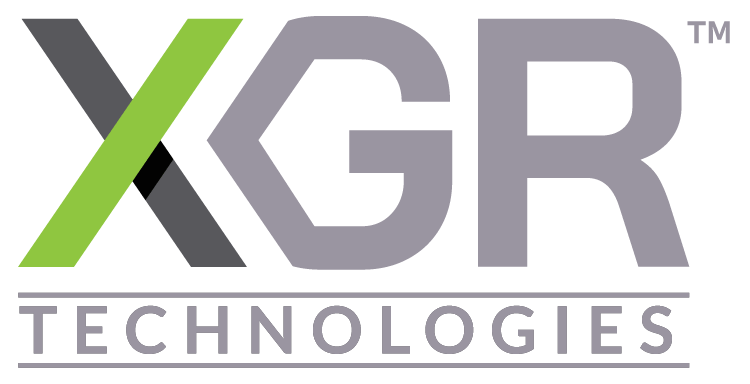Electromagnetic interference (EMI) is produced from unwanted signals when two or more devices clash against each other. This noise disrupts the functioning of the devices as well as the ones in the network or periphery. This EMI can be external or internal. Internal EMI may come from some component mounted onto the PCB assembly in a device. This may affect board-level functioning and lead to the damage of EMI-sensitive components mounted on the PCB. Some EMI signals may leak outside as well. All of this can be prevented using effective shielding techniques. This post explores EMI shielding techniques for devices as well as board-level noise suppression using solutions such as EMI shielding foil, PCB EMI shields, and more.
Overview of EMI Shielding Techniques
With rising automation and digitization across industrial processes and day-to-day gadgets, EMI shielding has gained traction as an effective measure to protect devices from EM and RF signals. Electronic devices, power lines, wireless networks, and more are some common sources of EMI. Thankfully, there are some practical solutions to protect external and internal EMI. RF shielding foils are an effective way to shield cables and devices enclosed in Faraday cages, housings, and more. While EMI shielding foils may look much like the aluminum foil used for wrapping foods, they are designed to suppress signals ranging from 85dB to 10GHz. They must meet the Protective Technical Barrier (PTB) requirement. You can get these in a roll form; however, one needs to choose the right type of foil based on various factors such as shielding level, fire rating, LEED information, UL listing, thickness in mils, temperature resistance, and more. On the other hand, when choosing the board-level EMI shields, look for flexible and customizable plasticized metal shields that are thermoformed to suit the shape, dimensions, and design of the PCB.
Impact of EMI on Sensitive Equipment and Data Integrity
There are various sources of EMI ranging from power lines, motors, and circuits to peripheral devices and components on the board. The impact of EMI is visible primarily and even unseen at times; however, EMI signals hamper the quality and functioning of devices, whether internal or external. There are devices on a network as well as certain components mounted on a PCB that are sensitive to EMI, which impacts the overall functionality. It also poses security risks and leads to corrupted data, hardware malfunction, and more. While there is much focus on making a device electromagnetically compatible (EMC) shielding to suppress EMI must be done through EMI shielding foils for cables and thermoformed flexible shields for PCBs.
Types of EMI and RF Shielding Foils
There are various types of EMI and RF shielding foils to safeguard cables and the peripheral devices from EMI.
- Conductive Fabrics: These lightweight and flexible fabric tapes can be easily wound around wires and irregular-shaped devices. They have one side of conductive metal foil, offering both flexibility and conductivity.
- Metal Mesh: These foils may be made of stainless steel, aluminum, or copper. Hybrid foils are made by combining two or more of these metals. The right combinations help enhance shielding effectiveness for complex applications across a wide frequency range.
- Aluminum Foils: These are lightweight and cost-effective foils that offer high conductivity. Aluminum is corrosion-resistant and useful for shielding wires and as device enclosures in applications that expose them to metals, moisture, chemicals, and more. These typically include HVAC systems, chemical industrial units, and water treatment units.
- Silver-Coated Foils: While these are more expensive than aluminum foils, they are perfect for high-frequency applications. Their shielding effectiveness is also better than aluminum foil and can suppress both EM and RF signals.
- PCB EMI Shields: As mentioned, board-level shields are necessary. While shielding cans are quite common, thin, thermoformed plasticized metal shields work well in suppressing EMI. They protect the EMI-sensitive components on the board by suppressing EMI coming from other components. This also helps achieve regulatory compliance. These are multi-cavity shields that solve many of the problems and challenges associated with board level shielding (BLS) technologies. They are flexible, can be customized, and conform to the shape of the board. These shields can be used in mission-critical application segments such as drones, military devices, medical devices, network computing, and more.
Applications of EMI and RF Shielding Foils and PCB EMI Shields
Here are some application areas of EMI shielding solutions.
- Data Centers: Aluminum foils, metal mesh, and PCB shields protect the humongous amounts of sensitive data from electromagnetic disruptions at various levels, such as hardware and board level.
- Healthcare: Silver aluminum foils and flexible PCB shields play a huge role in ensuring the safe operation of medical equipment.
- Heavy Engineering: Most industrial equipment needs housings or enclosures for protection against not only EMI but also vibration, dirt, spillages, environmental parameters, and more. Depending on the application silver or aluminum foils or metal mesh be used as housing to shield machinery and control systems from EMI.
- Consumer Electronics: Aluminum foils and PCB EMI shields play an important role in small, handheld devices where flexibility and light weight are crucial aspects. They help enhance device performance and reduce signal interference.
- Military and Aerospace: Silver EMI shielding foil and PCB EMI shields both are both used in these two sectors to protect critical communications and systems, GPS, avionics, drones, and more.
- Automotive: Silver and copper shielding foils as well as PCB EMI shields prevent vehicle electronic system malfunctions.
Key Considerations for Choosing EMI and RF Shielding Foils
EMI shielding foils can shield huge areas, such as an entire chamber or a portion of an industrial unit from EMI. It is applied like wallpaper on ceilings, floors, and walls. At the same time, it can cover extremely small or complex devices from EMI. Here are some factors to consider when choosing EMI shielding foils.
- Application requirements: Choosing the right EMI shielding foil depends on your equipment type, operating environment, exposure to environmental elements, corrosive substances, and other parameters. Consider the characteristics of each foil such as the metal and its properties, ASTM-based class, tensile strength, installation process, flexibility, and others against your requirements.
- Material thickness: You need to balance the shielding effectiveness required in your application. This is especially true for high-frequency applications. Both thickness and flexibility need to be considered. For instance, thick foils are fine for enclosures or big devices but they also add to the weight. Thin foils are suitable for wires and cables. Here, you can consider metal combinations and multilayered shielding techniques. Also, you need to check its compatibility with other materials.
- Thermal management: Heat dissipation is an important aspect, and the materials you choose must not trap heat, as this will lead to overheating of devices and subsequent damage. Choose metals such as copper or use foils with holes and perforation to facilitate proper ventilation.
- Frequency range:While most metal foils offer a wide frequency range, it is wise to choose the one that suits your application. For high-frequency range requirements, choose copper, silver, and other highly conductive metal foils. For low-frequency ranges, choose Mu-metal or nickel.
- Regulatory compliance: Choosing the right shields helps meet the industry standards and regulatory compliance. Some of the common standards include FCC, MIL-STD, IEC, RoHS, and EMC.
EMI suppression is crucial for the normal functioning of the circuit and in turn the device. There are EMI and RF shielding foils for big areas or devices, the best way to shield board-level EMI is by using plasticized EMI shields with an inner conductive side. XGR Technologies offers SnapShot® EMI shields made from a thin polyetherimide film on the interior and conductive tin on the exterior surfaces. These flexible, lightweight shields help reduce electromagnetic inference and are applicable for 2.4GHz frequency band components. If you need further information on these EMI shields, you can contact the team at XGR Technologies via phone or email.


